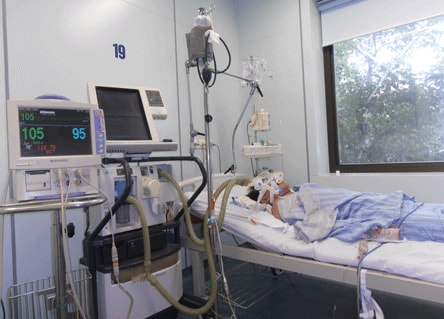Nearly 50% of flu patients are caused by the H1N1 virus.
According to Dr. Tran Nhu Duong, Deputy Director of the National Institute of Hygiene and Epidemiology, the results of influenza surveillance in the first four months of 2013 show that influenza A/H1N1 is circulating very widely with an infection rate of 48%. While the infection rate of influenza A/H1N1 last year was only 5-7%.

Influenza A/H1N1 is returning, spreading widely, accounting for 48% of flu strains.
Illustration: TC
The A/H1N1 strain is spreading rapidly in schools, of which Lao Cao Ethnic Boarding High School is the first school to record a cluster of A/H1N1 flu cases and has had cross-infections that have forced many students to stay home, including 37 students showing flu symptoms. Test results from three samples at the National Institute of Hygiene and Epidemiology have confirmed that these students are infected with A/H1N1 flu. These patients are currently being isolated and treated on-site, and many of them have no more flu symptoms.
Previously, Yen Bai and Thanh Hoa also recorded a cluster of A/H1N1 flu cases, including two deaths. Specifically, a 23-year-old man in Yen Bai died after more than a week of treatment at Bach Mai Hospital. This patient's family member also contracted the flu but the disease progressed mildly and has also recovered. The cluster of cases in Thanh Hoa was caused by a brother who came back from Hanoi with the flu, infecting many family members. All cases showed mild symptoms, except for a 13-year-old girl who developed severe symptoms, respiratory failure, pneumonia and also died. The test results of this patient's sample confirmed that she was positive for A/H1N1 flu.
At the Central Hospital for Tropical Diseases, during the past 5 days of the holiday, 2 more cases of A/H1N1 flu were admitted with severe symptoms, pneumonia, and respiratory failure. Notably, both families of this patient had many people with flu symptoms, so doctors determined that these could be considered two clusters of cases. All flu cases were mild and self-healing, with only two severe cases requiring hospitalization.
According to Dr. Tran Nhu Duong, Deputy Director of the Central Institute of Hygiene and Epidemiology, the results of influenza surveillance in the first four months of 2013 showed that influenza A/H1N1 was circulating very widely with an infection rate of 48%. Meanwhile, in 2012, the infection rate of influenza A/H1N1 was very low, only 5-7% of the total number of samples monitored.
"Recent studies have shown that there has been no change in the virulence of this flu strain. The reason why young, healthy people can still die is because these are people with sensitive constitutions, so when they get sick, the disease can progress quickly, causing respiratory failure, multiple organ failure and death," said Dr. Duong.
According to Dr. Nguyen Hong Ha, Deputy Director of the Central Hospital for Tropical Diseases, after the A/H1N1 flu pandemic, this flu strain still appears and circulates like a seasonal flu virus. Therefore, it is natural that there are patients with this flu.
However, the A/H1N1 flu virus has the characteristic of spreading quickly but does not cause high mortality. Meanwhile, the H5N1 and H7N9 flu viruses cause high mortality. If these virus strains recombine, they will create a new virus that has the characteristic of spreading quickly and causing high mortality, which is extremely dangerous.
Associate Professor, Dr. Nguyen Van Kinh, Director of the Central Hospital for Tropical Diseases, said: “More than 90% of A/H1N1 flu has mild symptoms, only a very small percentage progresses to severe disease. However, people should not be subjective. When flu symptoms appear, they should be isolated to avoid infecting people around them. When symptoms worsen, they should go to the doctor for treatment. In fact, cases of A/H1N1 flu with severe complications are all due to coming to the hospital too late, missing the “golden time” to use Tamiflu, which is the first 3 days of symptoms to inhibit the replication of the virus in the body, reduce the amount of virus in the body, and make the disease progress more mildly.”
(According to Dan Tri) -LH






